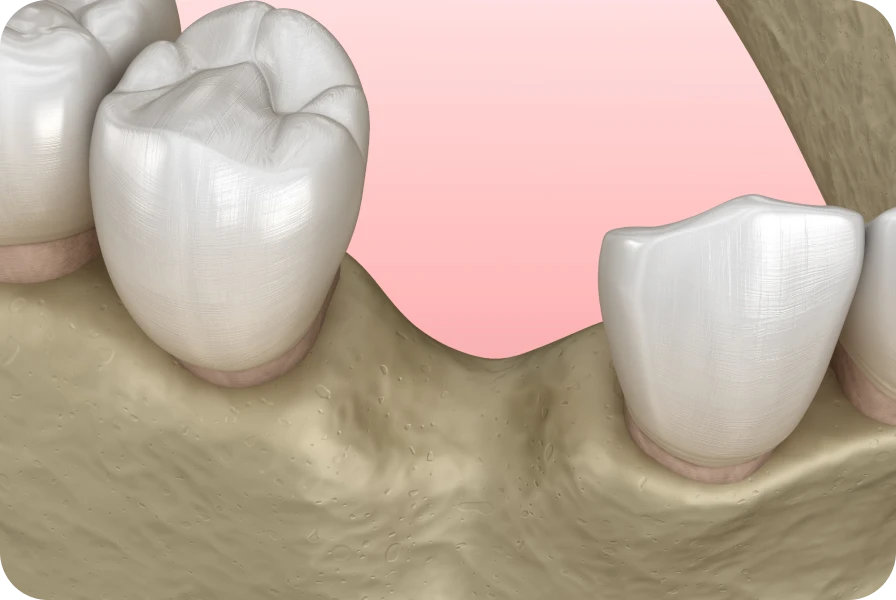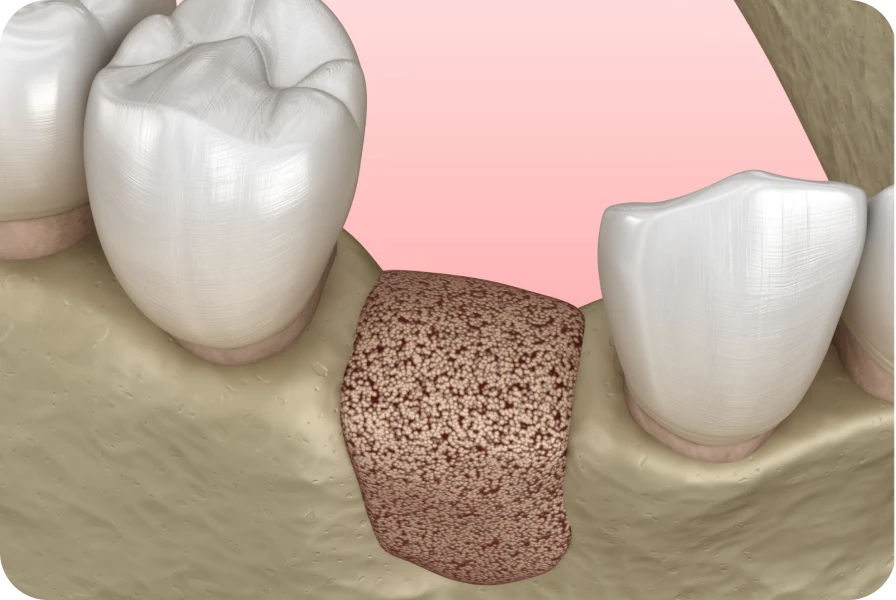Greffe osseuse (ROG)
Bone grafting is an essential procedure in dental implantology. It strengthens the bone structure before implant placement. This technique is used when natural bone mass is insufficient. To ensure the success of dental implants, a solid foundation is crucial. Guided bone regeneration (GBR) is one of the most common methods to stimulate bone growth. Thanks to this technique, it is possible to compensate for bone loss.
Why is Bone Grafting Necessary?
Bone loss can occur following tooth extraction. It can also be due to periodontal diseases or natural bone resorption. Without sufficient bone volume, it is difficult, if not impossible, to place a dental implant. In these cases, bone grafting becomes indispensable. It allows for recreating a solid foundation for the implant. Thus, you ensure better implant integration and greater longevity.
Bone grafting strengthens the bone structure before implant placement.
Steps of Bone Grafting
To begin, consult your oral surgeon to assess the necessity of a graft. A panoramic X-ray or a CT scan is often required. These examinations help determine the amount of available bone and plan the procedure. Then, once the decision is made, the procedure is scheduled.

Healing: After the procedure, it takes time for the grafted bone to integrate and fuse with the existing bone. This phase can last several months.
Preparation: Before the procedure, ensure you carefully follow the practitioner’s instructions. Avoid smoking, as it can compromise healing.
The Procedure: During the graft, a bone substitute material is placed in the area to be strengthened. This material can come from different sources, such as a donor, synthetic bone, or even your own bone.
Stabilization: A membrane is then placed to protect the grafted area and promote bone regeneration.
Types of Materials Used for Bone Grafting
Several materials can be used for a bone graft. Each offers specific advantages depending on each patient’s case.
Autogenous Bone: It is harvested from the patient themselves, usually from the chin, jaw, or hip. This type of graft offers the advantage of excellent compatibility.
Allogeneic Bone: It comes from a human donor. This type of material is prepared under sterile conditions to ensure its safety.
Xenogeneic Bone: It is derived from an animal source, often bovine. This material is treated to be compatible with the human body.
Synthetic Substitutes: They are manufactured in a laboratory. These materials offer an interesting alternative, especially for patients who prefer to avoid human or animal-derived grafts.

Post-operative Precautions
After a bone graft, follow your practitioner’s recommendations to ensure proper healing.
- Oral Hygiene: Maintain impeccable hygiene without irritating the operated area. Use a soft toothbrush and antiseptic mouthwashes.
- Diet: Opt for soft foods and avoid hard or crunchy foods that could damage the graft.
- Physical Activity: Rest and avoid intense physical activities during the healing period.
- Medical Follow-up: Attend your follow-up appointments so that your practitioner can monitor the graft’s progress. In case of pain or swelling, contact your dentist immediately.
Possible Complications
Like any surgical procedure, bone grafting carries certain risks. Complications remain rare, but it is essential to be aware of them.
- Infection: An infection can occur, even with the best precautions. It must be treated promptly to prevent graft failure.
- Graft Rejection: In some cases, the body may reject the grafted material. It is important to monitor for signs of rejection.
- Pain and Swelling: These symptoms are common after the procedure, but they should subside over time. If pain persists, consult your practitioner.
Benefits of Bone Grafting
Bone grafting offers numerous benefits for oral health.
- Bone Preservation: The graft helps preserve bone structure, which is essential for implant placement.
- Aesthetic Improvement: By preserving the bone, the graft also helps maintain a natural facial appearance.
- Implant Durability: By strengthening the bone, the graft increases the long-term success rate of dental implants.
- Prevention of Complications: Without a solid bone foundation, implants risk becoming loose or causing complications. Bone grafting prevents these issues.
Alternatives to Bone Grafting
In some cases, alternatives to bone grafting may be considered.
- Short Implants: For patients with insufficient bone height, short implants can be a solution. They allow for avoiding a graft while offering satisfactory stability.
- Zygomatic Implants: These longer implants are anchored in the zygomatic bone (cheekbones), thus avoiding the need for bone grafting.
- Graft-Free Regeneration Techniques: Certain techniques can stimulate bone growth without grafting, such as the use of morphogenetic proteins or specific amino acids.
Bone grafting is a key procedure in dental implantology. It allows for the reconstruction of a solid bone foundation, necessary for implant placement. Thanks to advancements in materials and techniques, bone grafting has become a common procedure with a high success rate. By following your practitioner’s recommendations and taking care of your oral health, you will maximize the chances of your graft’s success. Remember to consult your dentist regularly to monitor the condition of your graft and your implants.
